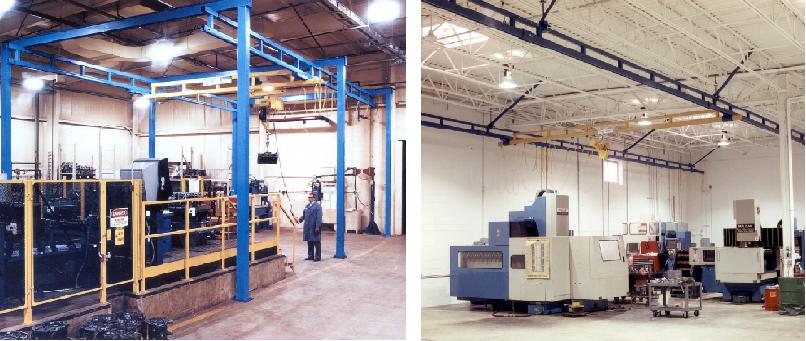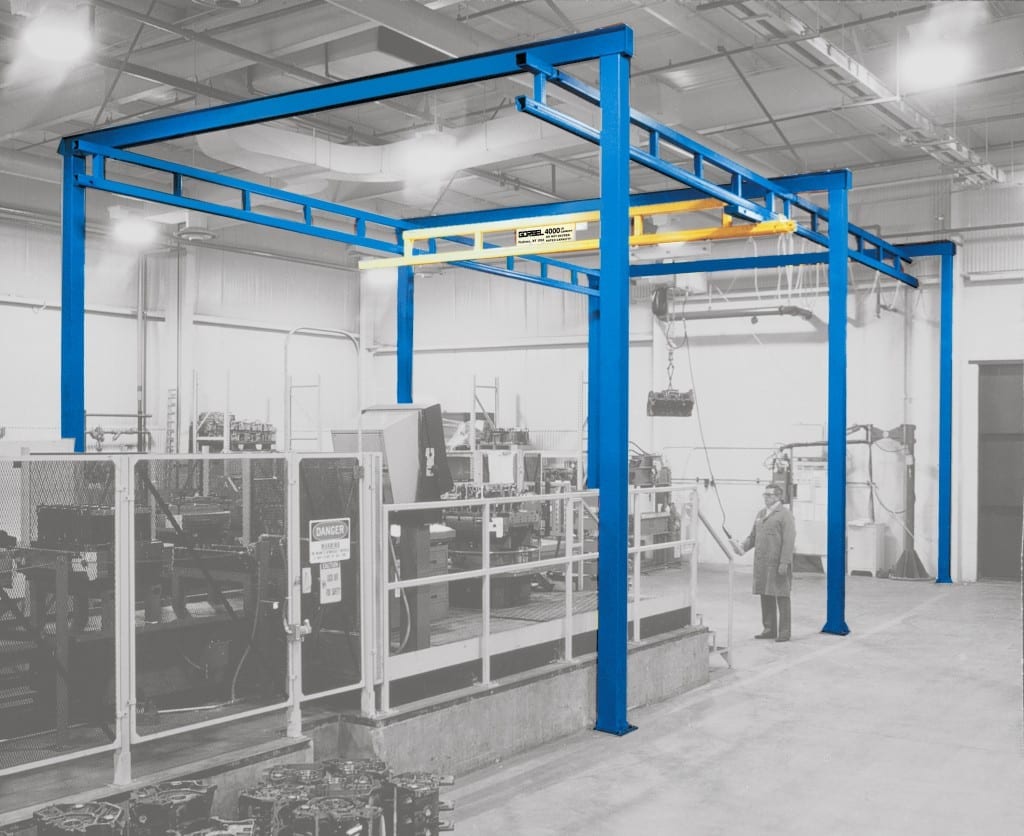Workstation Crane
Overhead Workstation Crane
What Type of Workstation Crane Is Most Appropriate?
- A workstation crane covers a rectangular area, while jib cranes cover circular areas.
- A workstation crane can be floor supported or hung from the ceiling. Jib cranes can be wall or pillar mounted and may require a special foundation.
- An enclosed track work station crane provides consistent ease of operation over the full range of movement.
- Jib cranes move more easily at the very end of the boom and are more difficult to move as the load approaches the pivot point.
Should the Workstation Crane be Manual or Motorized?
- Ease of movement and low weight are key features of enclosed track workstation crane systems. In fact, manual work station cranes do the job faster than motorized cranes. If the operator cannot control the load throughout the operation (for instance, over a vat, pit, or other inaccessible area), then the crane should be motorized.
What Type of Suspension: Free Standing or Ceiling Mounted?
- Free standing (floor supported) systems do not put stress on the building’s overhead structure. Installation is usually more straightforward, and these cranes are also easier to relocate in the future. These systems require a reinforced concrete floor of at least 6 inches.
- With ceiling mounted systems, supporting steel does not interfere with the handling operation. Ceiling mounted systems require a building with an adequate overhead structure to hang the crane.
What Capacity, Bridge Length, and Height?
The general rule is “less is more”
- Keep capacities to a minimum. Workstation cranes are designed with an adequate safety factor. If you “over-buy capacity”, the operator will need to move extra dead weight, which would not be a good ergonomic solution.
- Keep bridge lengths to a minimum. The less dead weight an operator has to move, the better. Short bridge lengths are better for higher-cycle production areas. Longer bridges are acceptable for lower production cycle’s or maintenance areas.
- Keep bridge heights (trolley saddle) to a minimum. Keeping the trolley saddle (TS) height less than 14 feet is desirable because it makes it easier to control and position the load.
Can the operator safely move the load?
- A work cell should be designed so a task can be performed by 90% of the workers
- A worker should not exceed 33% of his or her capacity; otherwise, the risk of chronic fatigue increases
- To help determine if your worker can safely move the required loads, refer to Ergonomic Study by Shealy and Stibitz ©1993.
Brochure Download’s
- Ergonomic Study -Increasing Productivity and Safety in Manual Overhead Bridge Crane Operation
- Free Standing Work Station Bridge Crane
- Ceiling Mounted Work Station Bridge Crane
- Work Station Jib Crane
- Ergonomic Overview – Crane Technology / Ergonomic Lifting

Floor Supported vs. Ceiling Mounted
Factory trained to install and service Gorbel Cranes, Our friendly sales staff and experienced service technicians travel to Utica, Syracuse, Albany, Binghamton, and Watertown New York on a daily basis. If you would like one of our sales representative’s or service technicians to visit your facility, please contact us today to schedule an appointment!
The Gorbel Work Station Crane is also known as a Modular Bridge Crane, a Free Standing Bridge Crane, and Modular Workstation Crane.


